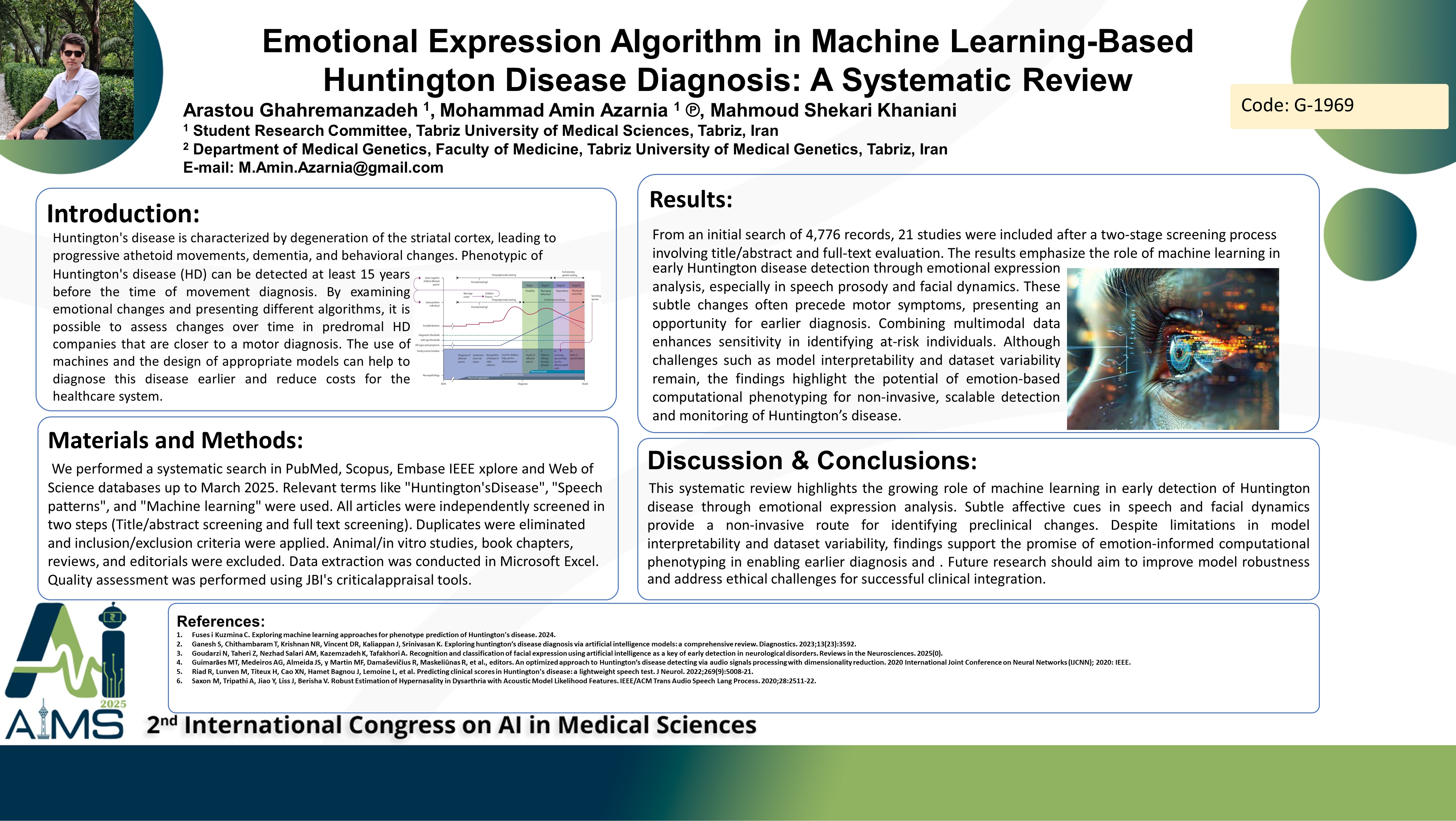الگوریتم بیان عاطفی در تشخیص بیماری هانتینگتون مبتنی بر یادگیری ماشینی: مروری سیستماتیک
کد: G-1969
نویسندگان: Arastou Ghahremanzadeh, Mohammad Amin Azarnia ℗, Mahmoud Shekari Khaniani *
زمان بندی: زمان بندی نشده!
برچسب: دستیار مجازی هوشمند
دانلود: دانلود پوستر
خلاصه مقاله:
خلاصه مقاله
Background: Huntington's disease is characterized by degeneration of the striatal cortex, leading to progressive athetoid movements, dementia, and behavioral changes. Phenotypic manifestations of Huntington's disease (HD) can be detected at least 15 years before the time of movement diagnosis. By examining emotional changes and presenting different algorithms, it is possible to assess changes over time in predromal HD companies that are closer to a motor diagnosis. The use of machines and the design of appropriate models can help to diagnose this disease earlier and reduce costs for the healthcare system. Method: We performed a systematic search in PubMed, Scopus, Embase IEEE xplore and Web of Science databases up to March 2025. Relevant terms like "Huntington'sDisease", "Speech patterns", and "Machine learning" were used. All articles were independently screened in two steps (Title/abstract screening and full text screening). Duplicates were eliminated and inclusion/exclusion criteria were applied. Animal/in vitro studies, book chapters, reviews, and editorials were excluded. Data extraction was conducted in Microsoft Excel. Quality assessment was performed using JBI's criticalappraisal tools. Finding: From an initial search of 4,776 records, 21 studies were included after a two-stage screening process involving title/abstract and full-text evaluation. The results emphasize the role of machine learning in early Huntington disease detection through emotional expression analysis, especially in speech prosody and facial dynamics. These subtle changes often precede motor symptoms, presenting an opportunity for earlier diagnosis. Combining multimodal data enhances sensitivity in identifying at-risk individuals. Although challenges such as model interpretability and dataset variability remain, the findings highlight the potential of emotion-based computational phenotyping for non-invasive, scalable detection and monitoring of Huntington’s disease. Conclusion: This systematic review highlights the growing role of machine learning in early detection of Huntington disease through emotional expression analysis. Subtle affective cues in speech and facial dynamics provide a non-invasive route for identifying preclinical changes. Despite limitations in model interpretability and dataset variability, findings support the promise of emotion-informed computational phenotyping in enabling earlier diagnosis and . Future research should aim to improve model robustness and address ethical challenges for successful clinical integration.
کلمات کلیدی
Huntington Disease, Emotional Expression, Machine Learning
